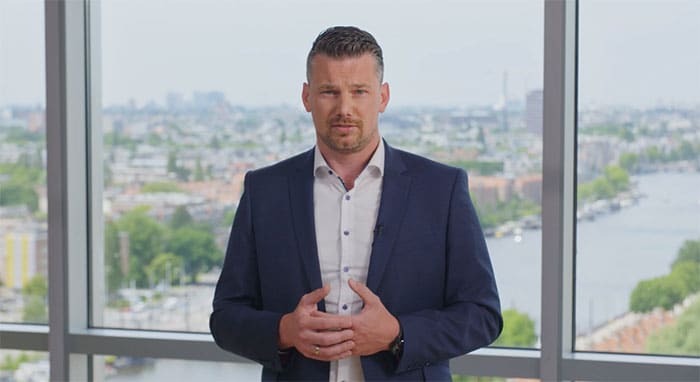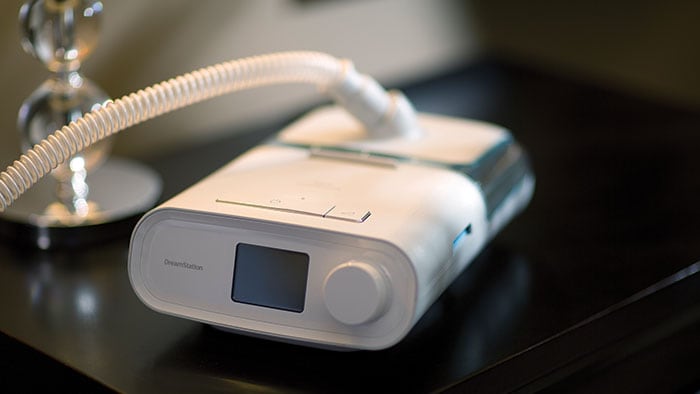Jun 28, 2022
Philips provides update on Philips Respironics’ PE-PUR sound abatement foam test and research program
Testing in accordance with ISO 18562 and ISO 10993 standards conducted by five certified, independent testing laboratories in the US and Europe
At the time the recall notification/field safety notice* was issued, Philips Respironics relied on an initial, limited data set and toxicological risk assessment, and assumed a worst-case scenario for the possible health risks out of an abundance of caution. Since then, together with five certified, independent testing laboratories in the US and Europe, as well as other qualified third-party experts, Philips Respironics has been conducting a comprehensive test and research program on the PE-PUR foam to better assess and scope the potential patient health risks related to possible emission of particulates from degraded foam and volatile organic compounds (VOCs).
This update is intended to provide healthcare providers, patients, and other stakeholders with updated information on the testing results to date. Philips will continue to provide regular updates as new test results and assessments become available, as not all tests have been completed to date.
The overall guidance for healthcare providers and patients in the recall notification/field safety notice* remains unchanged at this time.
Testing methods
Testing results and conclusions to date are grouped by device air path design and configuration, i.e., based on how the air flows through the device. Of the five device categories, the first-generation DreamStation devices represent 68% of the registered affected devices globally. Within each device category, testing and analyses are performed on new devices with pristine foam, devices with lab-aged foam and used devices:
The complete update on the PE-PUR testing results and conclusions available to date can be found here, and the main findings have been presented below. Healthcare providers, patients, and other stakeholders should use the complete update for any informed decision making, and not the overview in this press release.
The new and used first-generation DreamStation devices passed volatile organic compound and respirable particulate emission testing. This is very encouraging.
Frans van Houten
CEO of Royal Philips
“I deeply regret the concern experienced by patients who rely on the affected Respironics sleep and respiratory devices for their health and quality of life and want to emphasize our commitment to providing them with a resolution as fast as possible,” said Frans van Houten, CEO of Royal Philips. “More than 1,000 of our colleagues are working extremely hard to achieve this. While certain prolonged tests across the affected product categories are still to be completed, the results to date for the first-generation DreamStation devices, which represent the majority of the registered affected devices, show a very low prevalence of visible foam degradation. In addition, the new and used first-generation DreamStation devices passed volatile organic compound and respirable particulate emission testing. This is very encouraging. Results to date also indicate that ozone cleaning significantly exacerbates foam degradation.”
First-generation DreamStation devices (68% of registered affected devices globally)
Visual assessment: In order to determine the prevalence of foam degradation, which may result in foam particulate emission, a visual assessment of the foam was performed on a sample of 60,847 returned/used first-generation DreamStation devices from the US and Canada. The visual inspection was conducted according to a specific protocol as part of the repair process. The sample included 36,341 devices for which the users reported no use of ozone cleaning, 11,309 devices for which the users reported use of ozone cleaning, and 13,197 devices for which it was reported unknown by the user whether ozone cleaning was used.
In those devices where visible foam degradation was significant, i.e., there was reduction in foam volume, it was observed that there was accumulation of degraded foam within the airpath inside the device. The foam becomes hygroscopic (i.e., absorbs moisture) and sticky with degradation. It also loses significant volume and increases density as the structure changes from a foam to a viscous liquid material. As such, even when foam particulates are formed by degradation, they are likely to accumulate within the device and may not be directly emitted by the device.
A visual assessment of the foam was also performed on a sample of 1,360 returned/used first-generation DreamStation devices from various countries in Europe and on a sample of 931 returned/used devices from Japan.
Volatile Organic Compounds (VOCs): VOC testing according to ISO 18562-3 was performed on new, lab-aged and used devices to (1) quantify VOC emissions from devices, and (2) assess the toxicological risk associated with exposure to the quantified concentrations of those VOCs. It is important to note that these tested new and lab aged first-generation DreamStation devices were not exposed to ozone cleaning, in accordance with the instructions for use.
Particulate Matter (PM): PM testing according to ISO 18562-2 was performed on the devices to (1) quantify the particulate matter emitted from devices, and (2) assess whether the concentration detected is less than thresholds provided in the standard.
Biocompatibility testing of (degraded) PE-PUR foam: Additional testing is still being performed in accordance with ISO 10993 to facilitate a toxicological risk assessment of (degraded) foam particulates, which is relevant if they would potentially contact the patient. This testing includes chemical characterization (i.e., what chemicals may potentially extract or leach from the foam and have direct contact with body tissues and/or fluids), in vitro assessment (i.e., tests performed in a test tube, dish, etc. outside the body), and in vivo assessment (i.e., preclinical testing) of new, lab aged and/or used PE-PUR foam.
To support the assessment of potential genotoxicity, cytotoxicity, and irritation risks of lab-aged foam, chemical characterization of lab-aged foam, as well as experiments to assess the amount of foam that can potentially contact the patient are being conducted, as lab-aged foam did not pass Ames (genotoxicity), cytotoxicity and skin irritation bioassay testing. Further, complementing the lab-aged foam assessment, a chemical characterization of returned/used degraded foam is also being conducted to better elucidate risks under field conditions. Per ISO 10993, the bioassay results cannot stand alone and, therefore, a positive Ames, cytotoxicity, or skin irritation result triggers a required follow-up evaluation including identification of potential confounding factors, and a weight of evidence assessment to determine a confirmed conclusion on potential risks for patients under expected usage of the device.
Other devices under the recall notification/field safety notice
Other devices that are being tested include DreamStation Go (1% of the registered devices) and SystemOne (26% of the registered devices). These devices each have a different air path design/configuration compared to the first-generation DreamStation devices but contain the same PE-PUR foam.
New DreamStation Go and SystemOne devices passed VOC and PM testing based on standards available prior to ISO 18562 i.e., Indoor Air Quality Evaluation (as previously disclosed in the April 25, 2022, update). Further ISO 18562 VOC and PM testing is ongoing. The results of ISO 10993 biocompatibility testing of degraded PE-PUR foam for the first-generation DreamStation devices, which is ongoing, will also apply to DreamStation Go and SystemOne devices.
Further devices include Trilogy 100/200 (3% of the registered devices) and OmniLab/A-Series BiPAP (2% of the registered devices). New Trilogy 100/200 passed VOC and PM testing. New OmniLab devices passed VOC and PM testing based on standards available prior to ISO 18562 i.e., Indoor Air Quality Evaluation (as previously disclosed in the April 25, 2022, update). New and used OmniLab devices passed VOC testing based on ISO 18562. Further testing is ongoing.
Summary of ongoing tests
The first-generation DreamStation, DreamStation Go and SystemOne CPAP/BiPAP devices represent 95% of the registered affected devices globally. Philips Respironics expects to complete the remaining VOC and PM testing for these devices, as well as the degraded foam toxicological risk assessments (in accordance with ISO 10993) in the coming months. Philips Respironics will also continue with the tests to assess the impact of repeated ozone cleaning on foam degradation in these CPAP/BiPAP devices, as well as the remaining VOC and PM testing and the degraded foam toxicological risk assessments for the Trilogy 100/200 and OmniLab ventilator devices.
Silicone foam testing
In November 2021, the FDA requested that Philips retain an independent laboratory to perform additional testing to determine what, if any, potential safety risks may be posed to patients by silicone-based foam. Philips Respironics engaged independent testing laboratories to perform additional VOC testing. Based on the draft reports, Philips Respironics has not identified any safety issues. The assessment is being completed, and the final reports are subject to FDA review, which are expected in the coming months.
Guidance for healthcare providers and patients
As indicated, this update is intended to provide healthcare providers, patients, and other stakeholders with updated information on the testing results to date. The overall guidance for healthcare providers and patients in the recall notification/field safety notice* remains unchanged at this time. Philips Respironics remains fully committed to addressing all devices affected by the recall notification/field safety notice* and continues to work with the relevant competent authorities to further optimize the remediation plan. To date, approximately 2.7 million replacement devices and repair kits have been produced.
Additional information
Further information, including the complete update and FAQs, as well as video messages from Philips CEO Frans van Houten, Chief Business Leader Connected Care Roy Jakobs and Technical Project Manager for the test and research program Jan Bennik, can be found here.
* Voluntary recall notification in the US/field safety notice for the rest of the world.

Philips CEO Frans van Houten and Chief Business Leader Connected Care Roy Jakobs talk about the various aspects of the field safety notice

Technical Project Manager Jan Bennik speaks about the test and research program
About Royal Philips
Royal Philips (NYSE: PHG, AEX: PHIA) is a leading health technology company focused on improving people's health and well-being, and enabling better outcomes across the health continuum – from healthy living and prevention, to diagnosis, treatment and home care. Philips leverages advanced technology and deep clinical and consumer insights to deliver integrated solutions. Headquartered in the Netherlands, the company is a leader in diagnostic imaging, image-guided therapy, patient monitoring and health informatics, as well as in consumer health and home care. Philips generated 2021 sales of EUR 17.2 billion and employs approximately 78,000 employees with sales and services in more than 100 countries. News about Philips can be found at www.philips.com/newscenter.
Forward-looking statements
This statement contains certain forward-looking statements with respect to the financial condition, results of operations and business of Philips and certain of the plans and objectives of Philips with respect to these items. Examples of forward-looking statements include statements made about the strategy, estimates of sales growth, future EBITA, future developments in Philips’ organic business and the completion of acquisitions and divestments. By their nature, these statements involve risk and uncertainty because they relate to future events and circumstances and there are many factors that could cause actual results and developments to differ materially from those expressed or implied by these statements.
Topics
Contacts

Steve Klink
Philips Global Press Office Tel: +31 6 10888824
You are about to visit a Philips global content page
Continue
Ben Zwirs
Philips Global External Relations
You are about to visit a Philips global content page
ContinueMedia assets
Press releases
Get our press releases by e-mail
You are about to visit a Philips global content page
Continue

